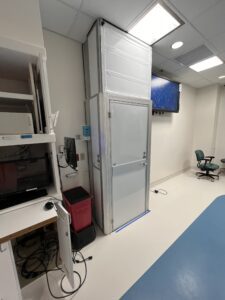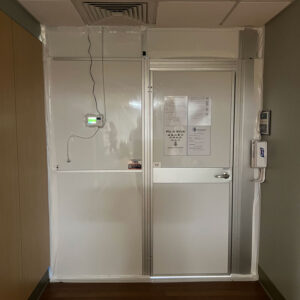Why Hospitals Are Increasingly Adopting Modular Containment Solutions
Hospitals face unique challenges in maintaining sterile environments while undergoing renovations, expansions, or emergency modifications. Enter rentable modular containment solutions. These innovative systems are revolutionizing the healthcare construction landscape, offering hospitals a reliable and efficient way to address these challenges without compromising patient care or safety.
This blog explores the growing adoption of rentable modular containment solutions across the healthcare sector. We’ll discuss the key challenges hospitals face, how modular systems provide a superior alternative, real-world examples of successful implementations, and the numerous benefits they bring to healthcare facilities.
The Problem Hospitals Face
Maintaining a sterile, functional hospital environment during construction or renovation is one of the most significant challenges healthcare facilities encounter. From expanding surgical suites to renovating patient rooms, even minor construction work can disrupt operations and pose risks.
Key Challenges:
- Infection Control Risks
Dust, debris, and airborne pathogens released during construction can compromise sterile environments, posing severe health risks to patients, especially those with weakened immune systems.
- Operational Downtime
Construction projects often lead to facility closures or temporary relocations, causing significant disruption to daily operations and inconvenience to staff and patients.
- Time and Budget Overruns
Traditional construction methods can be both time-consuming and costly, particularly when involving complex hospital environments that must adhere to strict health codes.
These challenges demand a solution that allows hospitals to manage construction quickly, cost-effectively, and without compromising safety or operational efficiency.
The Modular Containment Solution
Modular containment systems offer a game-changing alternative to traditional construction methods. Composed of prefabricated, reusable, and easy-to-install wall systems, modular containment creates temporary enclosures that safely separate construction zones from active hospital spaces.
Designed specifically to uphold sterile conditions, these systems are highly adaptable to a hospital’s unique needs.
How Modular Containment Works in Hospitals:
- Pre-Configured Panels: Lightweight and customizable panels form walls that isolate construction zones within hours instead of days.
- Integration with HEPA Filters: These walls often incorporate HEPA-filtered systems to improve air quality and maintain infection control standards.
- Complete Flexibility: Modular systems can easily expand, reshape, or be removed entirely as project needs change.
Hospitals benefit from this streamlined setup, enabling them to carry out renovations or expansions with minimal downtime and maximum infection control.
The Benefits of Modular Containment Systems in Hospitals
Hospitals adopting modular containment systems are recognizing several critical benefits, making this solution increasingly essential for healthcare facilities.
1. Improved Infection Control
Modular walls significantly reduce the risk of contamination during construction. HEPA filtration systems and negative air pressure capabilities ensure that clean air is maintained in patient care areas.
2. Rentable and Faster Project Completion
The pre-fabricated, easy-to-install nature of these solutions allows for significantly shorter project timelines. Enclosures can be set up and dismantled in a fraction of the time required for construction, minimizing disruption to hospital operations.
3. Cost-Effectiveness
Reusable panels and modular designs reduce material waste and lower overall project costs. Quick installation and the ability to maintain hospital operations during construction further enhance cost savings.
4. Scalability and Flexibility
Hospitals can scale rentable modular systems up or down based on their needs. This is particularly valuable during unexpected scenarios, such as creating additional isolation rooms during public health emergencies.
5. Ease of Compliance
Modular containment systems are designed to meet strict healthcare infection control regulations (e.g., Interim Life Safety Measures, ICRA). They offer a plug-and-play solution for maintaining compliance during construction.
6. Reduced Disruptions
Unlike traditional construction barriers, modular walls provide superior soundproofing, ensuring that noise and disturbances are minimized, creating a more comfortable environment for patients and staff.
By improving efficiency, lowering costs, and maintaining the highest standards of safety, modular containment systems are rapidly becoming the gold standard in healthcare construction.
The Future of Modular Containment in Healthcare
The adoption of modular containment solutions in hospitals is on the rise and shows no signs of slowing. With the growing need to balance operational efficiency, patient safety, and cost control, these systems offer a clear path forward for healthcare facilities worldwide.
As technology in modular construction advances, we can expect even more versatile and intelligent systems. For example, integrating IoT-enabled sensors to continuously monitor air quality or remotely adjust HEPA filtration settings could further enhance functionality.
Hospitals using rentable modular containment will not only see immediate benefits but will also be ready for the evolving demands of modern healthcare.
Contact us today to learn how we can support your next hospital rennovation.


